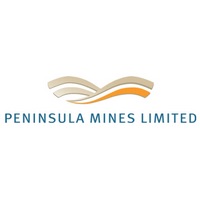PENINSULA MINES LIMITED (“COMPANY”)
Overview
The Company considers risk to be any event or action with the potential to interfere with or prevent the Company from achieving its goals and objectives.
The Board considers it important to establish a system of risk management and internal compliance and control with the aim of:
- providing a framework under which the Company can plan towards achieving its objectives;
- safeguarding the assets and interests of the Company and its stakeholders; and
- ensuring the accuracy and integrity of external reporting.
RISK MANAGEMENT SYSTEM
1. Responsibility
The Board is responsible for overseeing the establishment and implementation of an effective risk management system and reviewing and monitoring the Company’s application of that system.
Day-to-day management of risk is the responsibility of the relevant members of the Company’s Management. Management is responsible for reporting directly to the Board on all matters associated with risk management.
2. Process
Management, and the Board, have responsibility for identifying, assessing, treating and monitoring risks.
Management is required to report on the progress of risk management as a standing item at each Board meeting.
In fulfilling its duties of risk management, Management (and the Board as necessary) may have unrestricted access to company employees, contractors and records and may obtain independent expert advice on any matter they believe appropriate, with the approval of the Board.
3. Risk Profile
The risk profile of the Company can be categorised as follows:
- Legal obligations;
- Compliance with industry codes and practices including ASX Corporate Governance Council’s Principles and Best Practice Recommendations;
- Financial;
- Operational;
- Human;
- Political;
- Technological; and
- Economic cycle/markets.
4. Risk Management Policies and Practices
The Company maintains a number of policies and practices designed to manage specific business risks. These include:
- an insurance program;
- regular budgeting (draft planning budgets looking forward) and financial reporting;
- authorities to approve or reject expenditure for items outside the normal course of business;
- procedures/controls to manage environmental and occupational health and safety matters;
- procedures for compliance with continuous disclosure obligations under the ASX listing rules; and
5. Continuous Improvement
The Company’s risk management system is evolving. This is an on-going process and it is recognised that the level and extent of the risk management system will evolve commensurate with the evolution and growth of the Company’s activities.
Summary of Risk Management Policy
The Company has established a risk management policy which sets out a framework for a system of risk management and internal compliance and control, whereby the Board delegates day-to-day management of risk to the relevant members of the Company’s management. Management has responsibility for identifying, assessing, treating and monitoring risks and reporting to the Board on risk management. The policy also sets out the Company’s risk profile.
